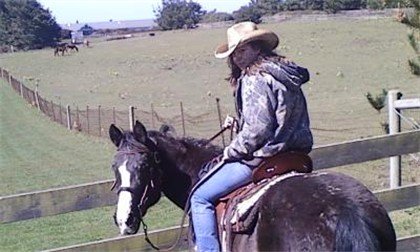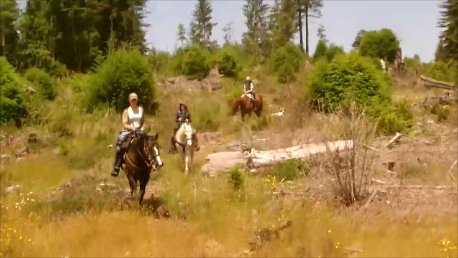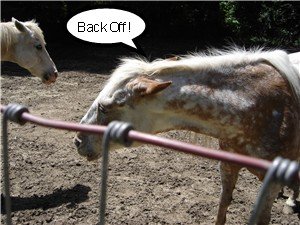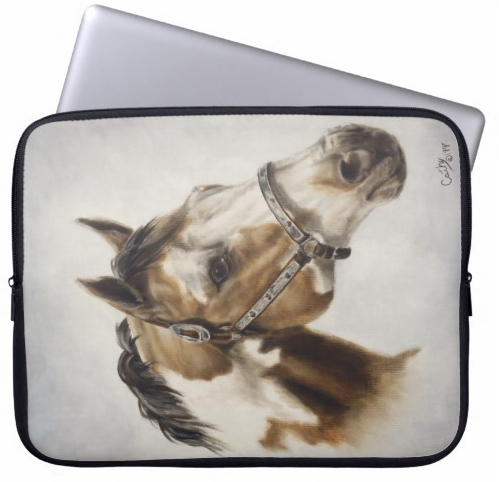Know Your Horse Markings
Identify - Record - Protect
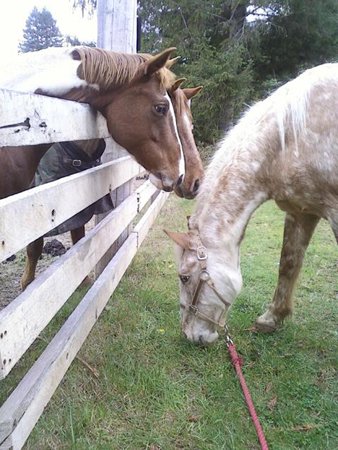
Horse markings are more than just a pretty pattern. They are used for identification and breed registration too. Have you heard the news lately?
There's been a rash of horse theft from single animals to whole herds. Many are stolen and sold at the meat market for money. Fast identification is essential.
Between the markings on a horse, the age and the sex it is possible to identify an individual horse among many. And when a horse has no identifiable marks? Well, that's where branding comes in.
Though color is important for identification, markings on a horse refer first and foremost to the white areas of hair on a horse. Secondly they refer to areas that are striped or black.
Facial Horse Markings
A star is a white mark on the forehead. It can be large or small.
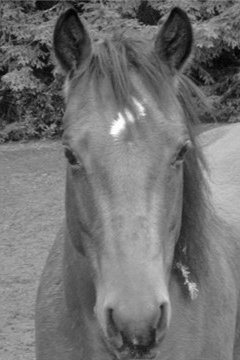 Star
StarA snip is a white mark on the nose/muzzle area. It can be large or small
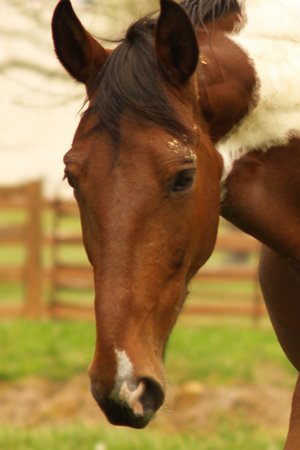 Snip
SnipLip marks are focused on the mouth, while a white muzzle includes the whole muzzle area.
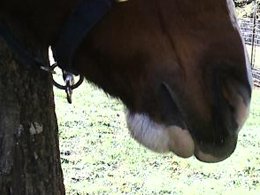 Lip Marks
Lip Marks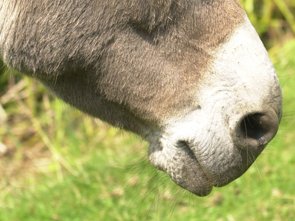 White Muzzle
White MuzzleA stripe is a narrow mark that runs down the length of the face.
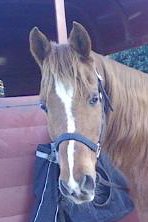 Stripe
StripeA Blaze is much wider than a stripe and can take up much of the face.
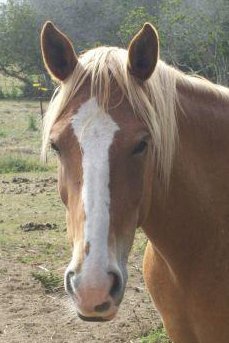 Blaze
BlazeA bald or white face has the white extending past the eyes. Often accompanied by blue eyes.
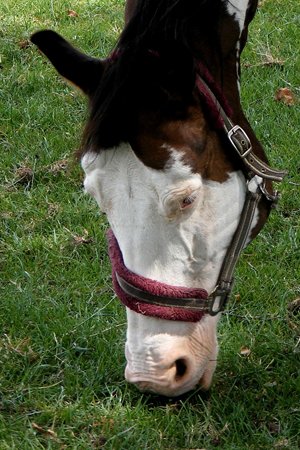 Bald
BaldHair Patterns
A whorl is akin to a cowl lick. It's the spot where hair growing in opposing directions meet up.
It often forms a swirling pattern. Horses can have one or more whorls on the forehead or face.
Whorls can swirl left, right or star out in all directions.
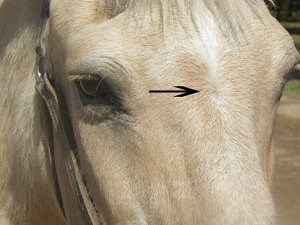

Horse Markings on the Legs and Hooves
A coronet or ermine is a white marking around the coronet just above the hoof.
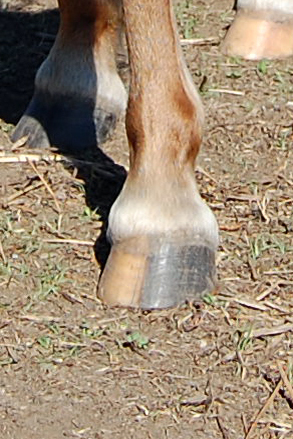 Coronet
CoronetA partial pastern is a bit of white on the pastern that does not go all the way around to form a sock.
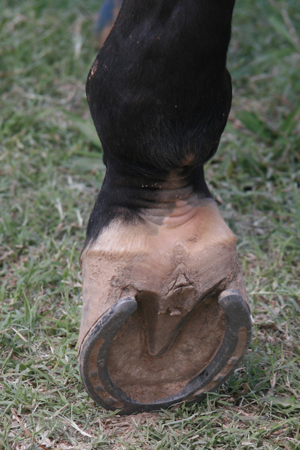 Partial Pastern
Partial PasternA pastern is a white marking on the pastern portion of the leg.
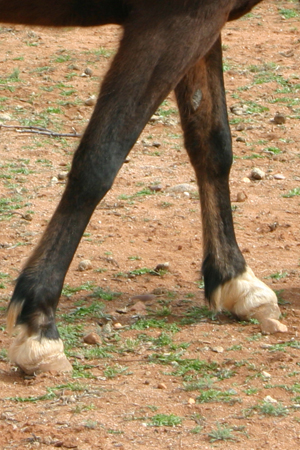 Pastern
PasternA sock is white on the lower leg below the knee.
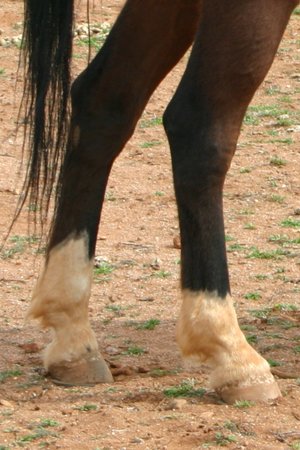 Sock
SockA boot is a white leg that extends higher than a sock and stays below the knee.
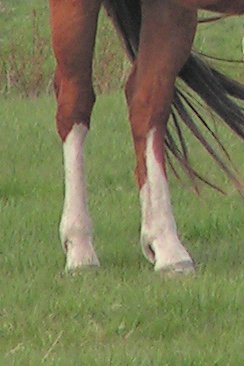 Boot
BootA stocking is a white leg that includes the knee or even higher.
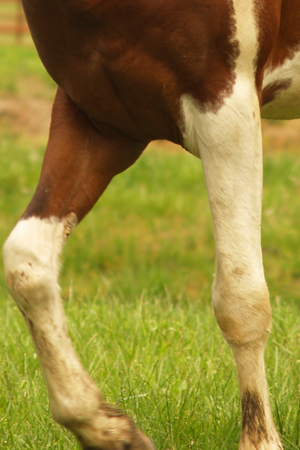 Stocking
StockingZebra, stripes or bars are the black horizontal marks found on the legs. They are most often found above the knee, but not always.
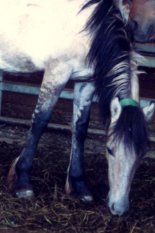 Zebra, Stripes or Bars
Zebra, Stripes or Bars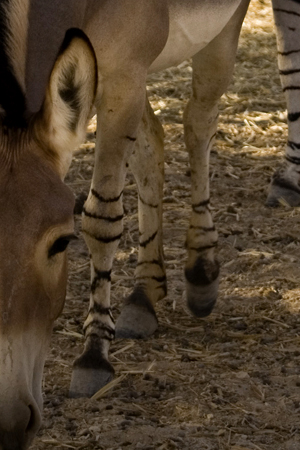 Zebra, Stripes or Bars
Zebra, Stripes or BarsPoints refer to black legs on any colored horse other than black.
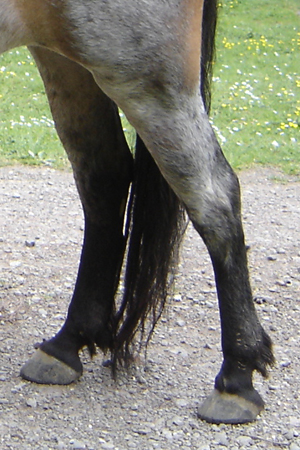 Black Points
Black Points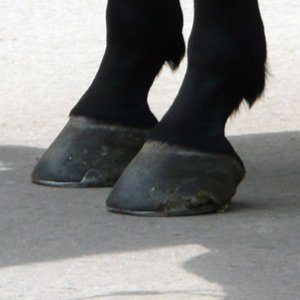 Black or Blue Hoof
Black or Blue Hoof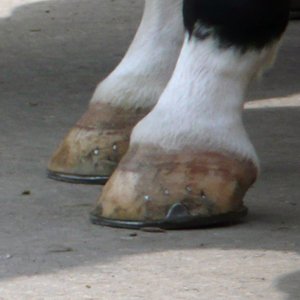 White Hoof
White Hoof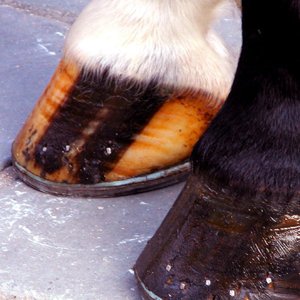 Striped hoof
Striped hoof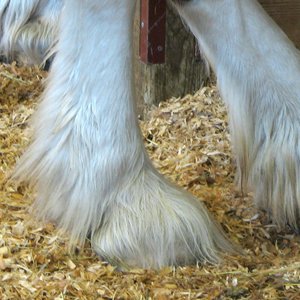 Feathers
FeathersDorsal, Dorsal Stripe or Eel Stripe
A dorsal stripe is a dark stripe that runs down the back all the way from the mane to the tail. It's most often seen on donkeys, mules, mustangs, duns, pony breeds and the Przewalski's horse.
A second stripe horizontal can run across the shoulders as well. This is most common in donkeys and mules.
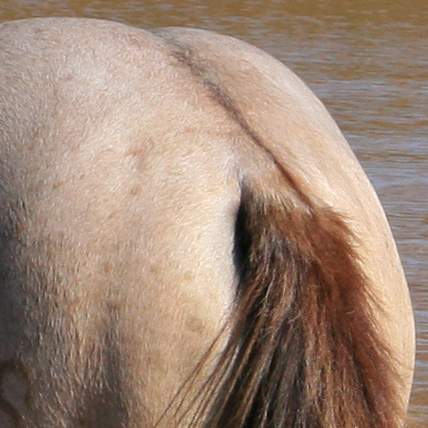 Dorsal Stripe
Dorsal Stripe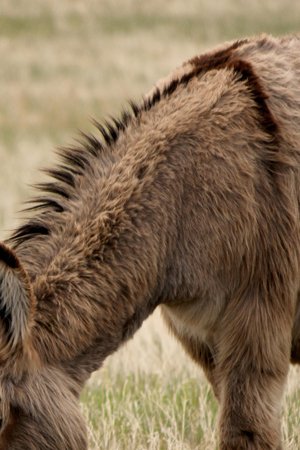 Shoulder Stripe
Shoulder StripeHow to Protect Your Horse Using Identification Marks
Could you describe your horse well enough so that a stranger could pick your horse out of a herd or a meat market? Most people can't. Why would you ever need to?
- Breed registry requirements
- Identify a stolen horse
- Identify a lost horse
- Separation - forced evacuation due to flood, fire or hurricane
- Help prove ownership
You don't need to wait for an emergency to put together a proper identification chart of your horse.
Start by taking clear photographs of your horse. Left side, right side, face, front and back. Write a detailed description of your horse. Include details like these:
- Breed
- Sex
- Height
- Approximate birth date
- Color - e.g. Dark brown that shows dapples with a Summer coat
- All identifiable horse markings
- Hoof colors
- Direction of mane growth (right side, left side or split)
- Mane and tail color(s)
- Swirls- number and direction
- Scars or old injuries
- Any white saddle sore marks
- Brand
- Tatoo
- ID chip
Last but not least, take close up pictures of the 4 chestnuts on your horses legs. Did you know that a chestnut is as unique to a horse as a fingerprint is to a human? Yes it is! So use it to your horse's advantage. It's just one more identifiable mark unique to your horse.
These photos show the right front chestnuts on four different horses. Notice how different they are.

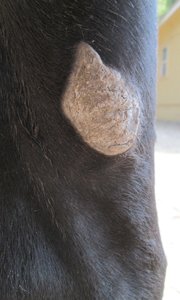
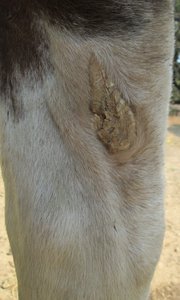
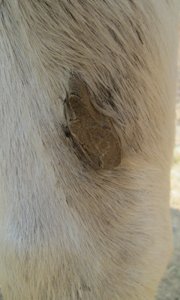
If your horse is a solid color with very few identifiable horse markings consider getting a brand, tattoo or an Id chip. If you'd like to learn more about horse identification visit Net Posse. Net Posse is an organization dedicated to lost and stolen horse recovery.
Brush up on your horse colors here.
More Topics You May Enjoy
True Horse Stories
Check out these fun true horse stories! Read about real life adventures on horseback.
The Beginning Trail Rider
Trail riding is the best way to enjoy nature! Get the most out of your next adventure with horseback trail riding tips.
Draw a Horse Step by Step
Horse Drawing - Made Simple. This horse drawing lesson is simple and rewarding. If you can draw circles and simple lines you can draw horses. Grab a paper and pencil and let’s get started…
Shop Horse Lovers Gifts
Find fun and functional gifts for horse lovers inspired by the art work of Cathy Cleveland.
